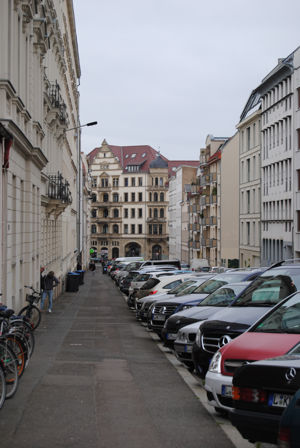 vollgeparkte Straße
(Anna Daab)
vollgeparkte Straße
(Anna Daab)
Energy consumption is in the light you turn on and behind the tap you turn on.
But you don't just use energy actively in your own four walls, you also use it passively - so it's no surprise that the building sector is responsible for around 40 percent of final energy consumption in Germany. This figure could be much lower. A full three-quarters of the 18 million or so residential buildings in Germany are inadequately insulated and consume more energy than necessary. This means that the potential for saving energy and CO2 is far from exhausted.
Turning old into new - insulated
If you are building a new house, passive or active houses are the answer. They use very little energy or even produce an energy surplus. But how can existing buildings be optimised?
Both old and new buildings can use natural materials to reduce their energy needs. Since warm air rises, insulating the upper floors is one of the most cost-effective thermal insulation measures. Insulation materials made from renewable resources are available: wood fibre boards, cellulose, flax, hemp and cork:
Wood fibre insulation board is used to insulate walls and ceilings, including roofs. Cellulose and flax are particularly good at transporting moisture that has penetrated the insulation to the outside. Stuffed hemp is an environmentally friendly alternative to foam for insulating joints in windows and doors. The bark of the cork oak, on the other hand, provides the raw material for flooring and for internal and impact sound insulation.
Natural building materials often carry the international "natureplus" label. The BUND yearbook 2015 "Ökologisch Bauen und Renovieren" lists a number of natural building materials with a focus on "energy self-sufficiency". It is available at major kiosks and railway station bookshops, as well as at the BUND shop. A special service is provided by the information on subsidy policies, the comparison tables on insulation materials and the comparison of heating costs for different house types and system constellations.
Status: November 2014